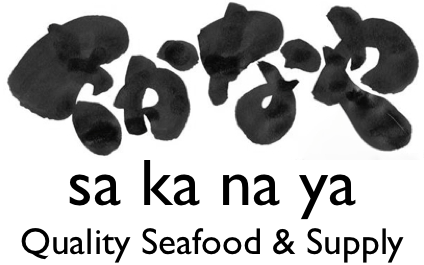How to prepare your fish
VARIOUS WAYS TO PREPARE YOUR FISH
In sa ka na ya, preparation of frozen fish (before it is cook or process) is primary. In Japan there are methods of thawing or defrosting frozen fish. So, how to properly prepare your frozen fish?
Below, we will try to explain the easiest way to you.
EXPIRE DATE & OPEN DATE:
Basically, an "Expire date" is a date which (food) is not good to be consumed, and an "Open Date" is a date which (food) being stored in refrigerator / freezer at home, food which has been opened or (frozen food) stored in a home refrigerator (where the temperature is not the same as in the store), its expiration limited to 2 - 3 weeks. If (food) kept for too long (the product) will lose its moist (moisture lost; dehydrated; aged).
FROZEN FISH FILLET & OTHER FISH PRODUCTS:
Frozen fish surface is coated by glaze, which is a thin layer that superimposed water (coating). When it melts it will become dew water (excess of water) and would make your fish goes bad easily.
How to prepare your frozen fish before you marinate or process it?
- If you have plenty of time, wrap your frozen fish with kitchen paper then thaw or leave it to defrost in your refrigerator, for 3 - 4 hours.
- If you do not have plenty of time, soak your frozen fish in room temperature water for about 1 minute, then pat it to dry with kitchen paper and your fish is ready to be processed.
ICHIYABOSHI PRODUCTS:
There is no glaze on Ichiyaboshi products' surface.
Whether you have plenty of time or not, the process on how to prepare it, is the same.
There is no need to wait for thawing or defrosting, you could directly cook or grill it while it is frozen.
If the product is already melted, the dew water attached will cause a less stronger taste and causing an unpleasant odors.
We recommend you to grill Ichiyaboshi on top of an open charcoal fire. However, if you don't have a griller set, using a fry-teflon / grill pan is also recommended.
Particularly for Squid Ichiayaboshi, we only use fresh (quality) squid which can be eaten raw (as sashimi). Slightly burn its edges and it is ready to be eaten. If you burn it too long, it would be harder to chew.
SASHIMI PRODUCTS:
Basically, it is not recommended to eat sashimi at (normal) room temperature. It would become bad. It is recommended to consume sashimi at 6 degree celsius.
- Fresh Tuna: Please consume immediately. You can store it in a refrigerator for 1 - 2 days. Please do not consume if the color turns dark.
- Frozen Tuna: Remove it from its plastic pack, soak it in normal temperature salted water (add salt into the water - 3% salinity level) up to 1 minute. When it becomes slightly softer, remove the skin and then wrap it with kitchen paper, it (kitchen paper) will absorb all excess water contained in the tuna meat, let it thaw in a refrigerator for about 3 - 4 hours (not freezer), and it is ready to be eaten raw.
- Slipper Lobster: Put it in a refrigerator or soak in cold water along the plastic pack, the slipper lobster will defrost perfectly.
- Cuttlefish: Soak it in water along with its plastic pack with maximum time 30 minutes, lift and removed its plastic pack, then leave the cuttlefish to half-thawed, it would become softer and easy to cut.
VACUUM PACKED PRODUCTS:
Soak it in cold or room temperature water, the product will defrost within 30 minutes - 1 hour, estimation time.
- Whitebait: To make a "Kama Age", put the whitebait into boiling salted water (which is similar to the level of saltiness of seawater - 3% salinity level) for 3 - 4 minutes, drain it and serve it as "Kama Age Shirasu".
- Shrimp: Boil it with its shell, when you peal the shell, the meat would taste very delicious. You will find the shrimp roe inside the head, it tastes very good, do not throw it out.

